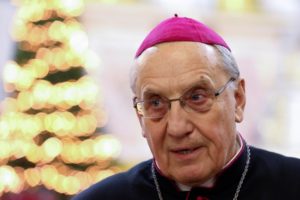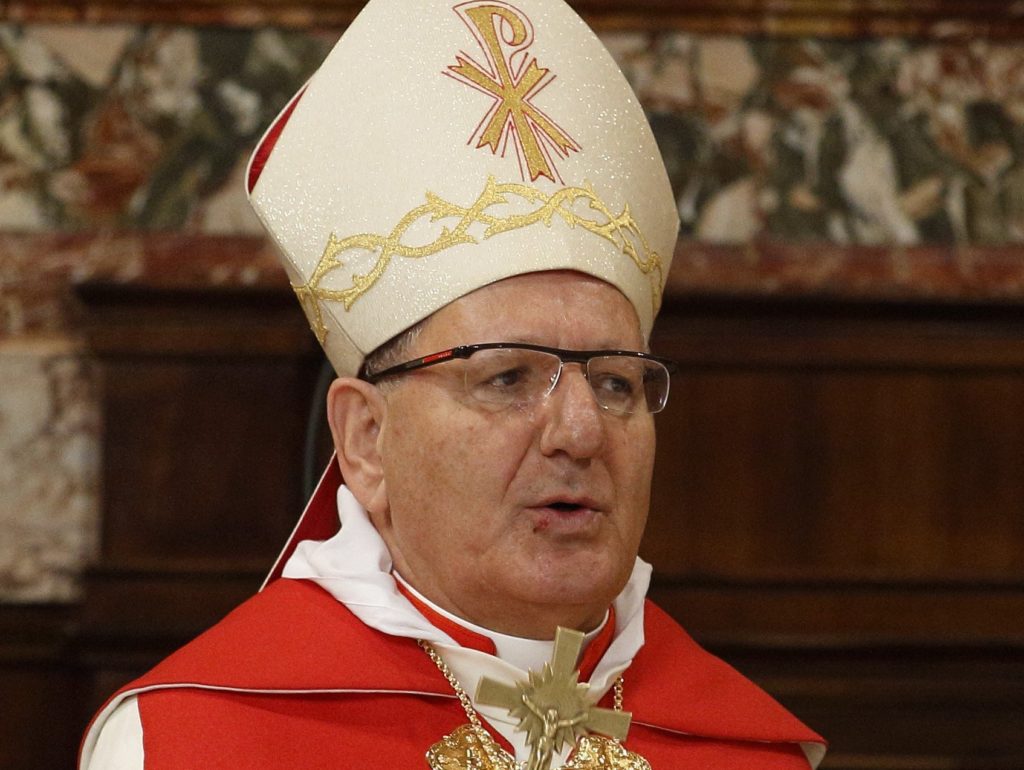ROME — Cardinal Louis Raphaël Sako of Baghdad is currently living in a self-imposed exile in Kurdistan, after a recent decision by Iraqi President Adul Latif Rashid to withdraw official recognition of his role as head of the country’s Chaldean Catholic Church.
Although Rashid has argued that the decree, originally issued under his predecessor, was meaningless because the rights of the Church are already protected by the country’s constitution, Sako declared that it’s part of a bid to wrest control of the Church’s assets and thus left Baghdad in protest.
If history is any guide, Sako’s fate could play out in a variety of different ways, from triumph to heartbreak, with plenty of other options in between.
To be clear, the idea of a bishop in exile is hardly a novelty.
Famously, St. John Chrysostom was twice banished from his archdiocese in Constantinople, and died during the second of his enforced absences. St. Hilary of Poitiers spent four years in Turkey in exile from his diocese, from where he continued to churn out the theological works that earned him the title “Hammer of the Arians” and eventually made him a doctor of the Church.
Flashing forward, in the mid-to-late 19th century scores of Italian bishops went into self-imposed exile after the unification of Italy in 1860 and the collapse of the Papal States a decade later, mostly because the prelates were unwilling to sign off on the loss of the papacy’s temporal authority and regarded the new Italian government as a usurper. Some eventually returned to their dioceses, but many died without ever going back.
One such prelate, Cardinal Domenico Carafa of Benevento, took refuge in Rome, where he became the “camerlengo” (“chamberlain”), meaning the official who rules over the Church after a pope dies and before his successor is elected, and also played a key part in the First Vatican Council in 1870. Another such exile, Cardinal Sisto Riario Sforza of Naples, is today a candidate for sainthood, having been declared “venerable” in 2012.
Missionary bishops are no strangers to exile.
Italian Bishop Ferdinando Fulgenzio Pasini was a Franciscan missionary in China in the early 20th century, where he was named the bishop of Sanyuan in 1944. After the Russian Revolution, Pasini was arrested, imprisoned, and eventually expelled from the country. He returned to Italy, where Pope Pius XII offered to name him to another diocese, but Pasini always politely declined, signing his correspondence for the next 30 years as “Bishop of Sanyuan.”
Pasini participated in all four sessions of the Second Vatican Council and continued to try to raise consciousness about the Church in China until he resigned in 1983, whereupon he moved to Jerusalem and died two years later. Today he’s buried on the Mount of Olives.

Communism actually generated a whole generation of bishops in exile.
In Hungary, Cardinal József Mindszenty was granted political asylum by the U.S. Embassy in Budapest in 1956 after having been convicted in a Communist show trial, and lived there for 15 years before finally making his way to Vienna, where he too died in exile in 1975. Cardinal Josyp Slipyj spent 18 years in Soviet prisons and then led the Ukrainian Greek Catholic Church in exile from Rome from 1963 to his death in 1984.
More recently, Archbishop Tadeusz Kondrusiewicz of Minsk in Belarus was forced to remain in his native Poland in 2020 after the government refused to let him back into the country following criticisms of Belarusian President Alexander Lukashenko and his handling of pro-democracy protests.
Eventually, a deal was struck that allowed Kondrusiewicz to return for the Christmas liturgies in December 2020, but his resignation was accepted by Pope Francis not long afterward.
There’s also the case of Bishop Macram Max Gassis of El Obeid, Sudan, who was forced to flee the country in 1990 after having been condemned by the government for testifying before the U.S. Congress regarding human rights abuses in Sudan. He spent more than 30 years in exile before dying in Pennsylvania last month.
It’s not always government hostility that drives a bishop into exile — sometimes the pressures come from within his own flock.
Such was the case for Cardinal Peter Ebere Okpaleke, who was named the Bishop of the Diocese of Ahiara in Nigeria in 2012 under Pope Benedict XVI, but who never actually set foot there because of unrelenting opposition from a swath of local clergy and laity, furious that Okpaleke was not part of the majority Mbaise people. Francis eventually accepted his resignation in 2018, appointed him to a newly created diocese, and made him a cardinal last year.
What lessons can be drawn from these precedents for Sako?
First, once a bishop goes into exile, there’s no guarantee he’ll ever make it back.
Second, popes are not omnipotent: they cannot just force recalcitrant regimes to tolerate bishops perceived, for one reason or another, as troublesome. Indeed, the case of Ahiara demonstrates that sometimes popes can’t even force their own flock to accept a bishop if they’re determined not to do so.
Third, sometimes exile can afford a bishop a greater platform than if he were in his own diocese. Mindszenty, for instance, became a Cold War hero for his suffering at the hands of the Soviets; Gassis became among the most oft-quoted source of insight on Sudan in the global press for 30 years.
Fourth, sometimes the Church finds ways to offer exiled bishops forms of compensation, from rising to other positions of power in their own lifetimes to sainthood causes after death.
Fifth, how much support an exiled bishop can expect from the Vatican often depends on how much blame Rome believes he carries for creating the situation in the first place. In the era of St. Pope Paul VI and his policy of Ostpolitik, Mindszenty was sometimes regarded as an irritant, resisting several appeals from Paul to resign.
In similar fashion, Francis certainly expended a good deal more energy on behalf of Okpaleke in Nigeria than, say, for Kondrusiewicz in Belarus, which may be related to perceptions voiced “sotto voce” (“under the voice”) at the time among Vatican diplomats that Kondrusiewicz might have deliberately provoked the Lukashenko regime.
In all likelihood, these precedents probably are of only cold comfort to Sako at the moment.
But at the very least, the lesson of history would seem to be that if hostile forces hope to silence a prelate by driving him out of his diocese, such exiles often have precisely the opposite effect — which would suggest that, whatever else happens, we haven’t heard the last of Sako.

